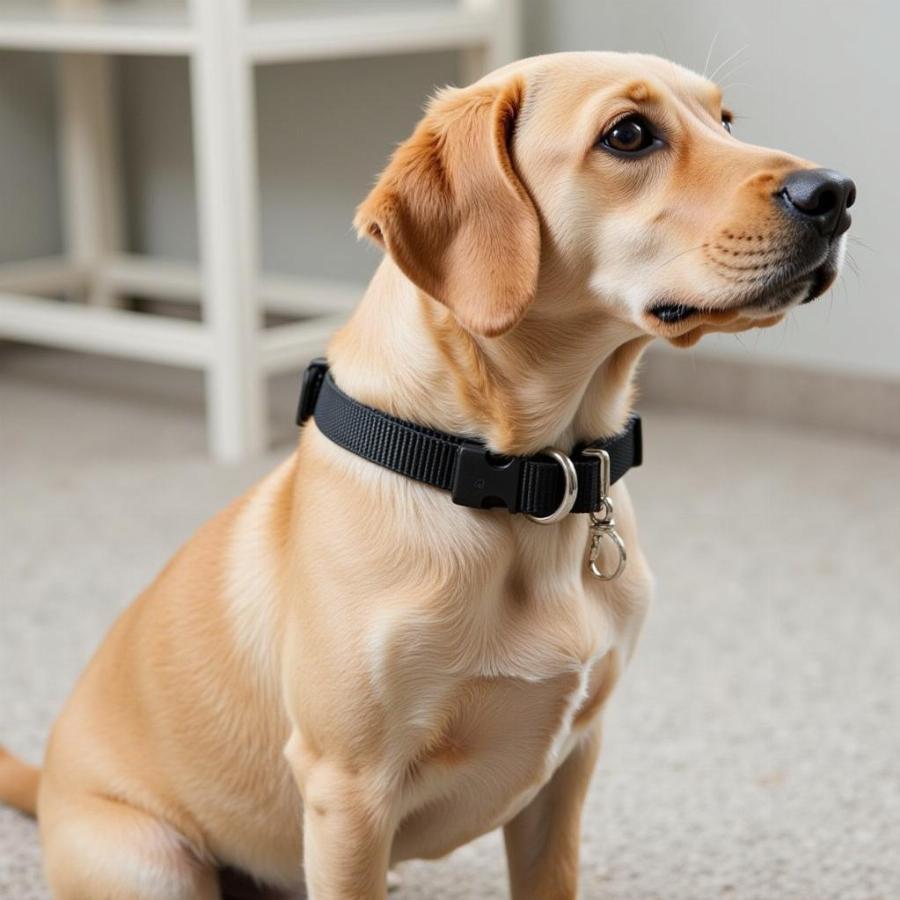Choosing the right training collar for your small dog can feel overwhelming. With so many options available, it’s essential to find one that suits your pup’s size, breed, and temperament, as well as your training goals. This comprehensive guide will walk you through everything you need to know about dog training collars for small breeds, ensuring a positive and effective training experience for both you and your furry friend.
Understanding Your Small Dog’s Needs
Before diving into collar types, consider your dog’s unique characteristics:
- Breed: Certain breeds are known for their sensitivity.
- Size and Weight: Opt for a collar specifically designed for small breeds, ensuring a comfortable fit without putting pressure on their delicate trachea.
- Temperament: A highly excitable dog might require a different type of collar compared to a calmer, more obedient pup.
Types of Dog Training Collars for Small Breeds
Here’s a breakdown of the most common types of training collars suitable for small dogs:
1. Flat Collars: A Classic Choice
- Best for: Everyday use, identification tags, leash training for puppies, and dogs who walk well on a leash.
- Pros: Comfortable, affordable, available in various materials and designs.
- Cons: Not ideal for strong pullers or dogs prone to slipping out of their collars.
2. Martingale Collars: Gentle Control for Slippery Pups
- Best for: Dogs who tend to back out of their collars, have narrow heads, or are still learning leash manners.
- Pros: Tightens slightly when pulled, preventing escape without choking, distributes pressure evenly.
- Cons: Not suitable for strong pullers, may not be appropriate for brachycephalic breeds.
 Martingale Collar on a Small Dog
Martingale Collar on a Small Dog
3. Harnesses: Comfort and Control Combined
- Best for: Brachycephalic breeds, dogs prone to tracheal collapse, strong pullers.
- Pros: Distributes pressure evenly across the chest, reduces strain on the neck, provides better control.
- Cons: Can be bulky, some dogs may try to slip out of them.
4. Head Collars: Redirecting Pulling Power
- Best for: Strong pullers, dogs needing extra guidance on walks.
- Pros: Provides gentle control by redirecting the dog’s head, discourages pulling.
- Cons: Requires acclimation, may take some dogs time to adjust to the sensation.
Choosing the Right Size and Fit
No matter the type of collar you choose, a proper fit is crucial.
- Two-Finger Rule: You should be able to comfortably fit two fingers between the collar and your dog’s neck.
- Adjustability: Look for collars with multiple adjustment points for a secure and comfortable fit as your puppy grows.
Training Collar Alternatives for Small Dogs
- Positive Reinforcement Techniques: Utilizing treats, praise, and toys to motivate your dog can be highly effective.
- Clicker Training: This method uses a distinct sound to mark desired behaviors, making training clear and consistent.
Conclusion
Finding the perfect dog training collar for your small pup requires careful consideration of their individual needs and your training goals. Remember that patience, consistency, and positive reinforcement are key to successful training. By prioritizing your dog’s well-being and choosing the right tools, you can build a strong bond and enjoy countless happy walks together.
FAQs about Dog Training Collars for Small Dogs
1. Can I use a regular collar for training my small dog?
While a flat collar can be used for basic leash training, it’s not ideal for dogs who pull excessively as it can put pressure on their trachea.
2. Are prong collars safe for small dogs?
Prong collars are not recommended for small dogs or any dog, as they can cause pain and injury. Positive reinforcement methods are always a safer and more humane approach.
3. How do I introduce a new collar to my small dog?
Let your dog sniff the collar and associate it with positive experiences like treats and praise. Gradually introduce it into their routine, starting with short periods of wear.
4. My small dog coughs when wearing a collar. What should I do?
This could indicate a too-tight collar or potential tracheal sensitivity. Consult your veterinarian to assess for any underlying medical conditions and adjust the collar fit or explore harness options.
5. What material is best for a small dog’s collar?
Soft, breathable materials like nylon or leather are generally comfortable for small dogs. Ensure the material is durable and easy to clean.
Looking for more helpful tips and advice on caring for your small dog?
Check out these other articles on Beaut Dogs:
Need personalized guidance on finding the perfect training tools for your furry friend? Contact Beaut Dogs at [email protected] for expert advice and support. We’re here to help you navigate the world of dog ownership with confidence and care.